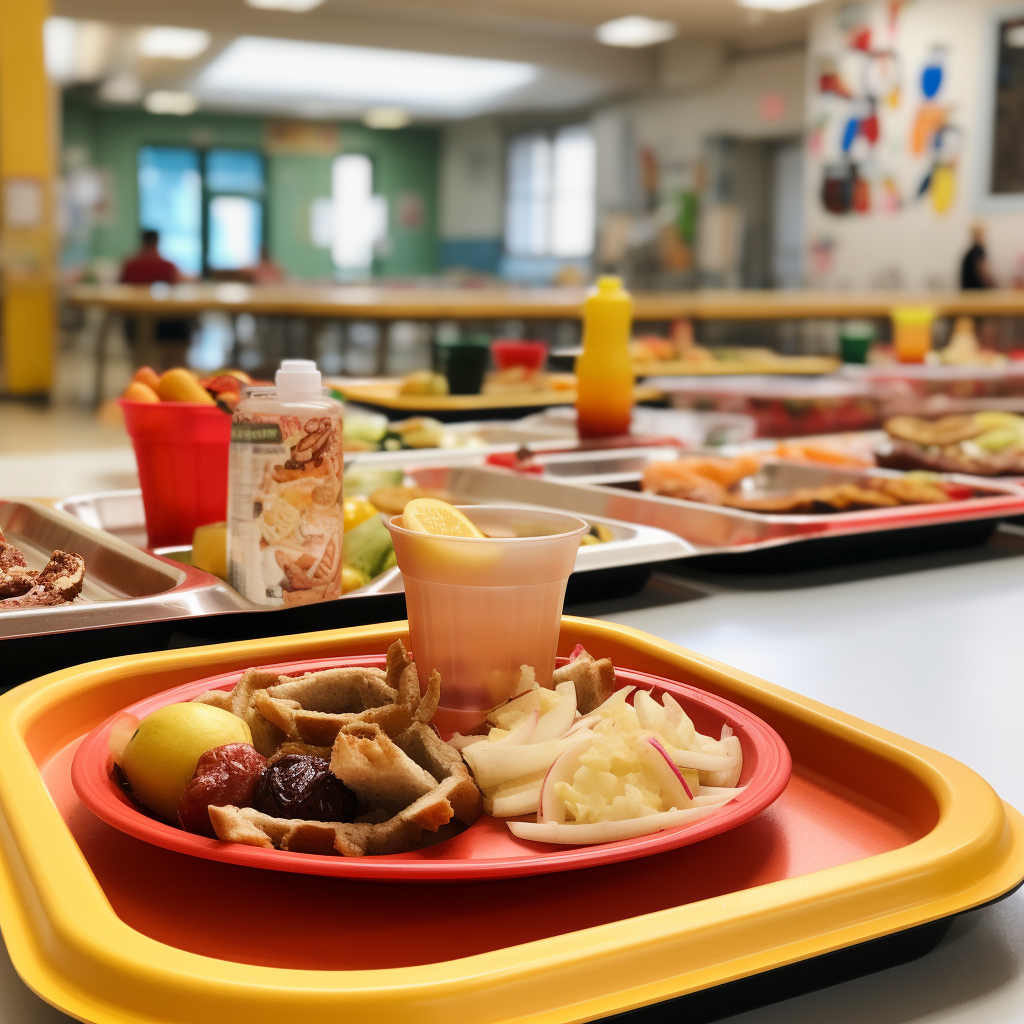Applying for Free and Reduced Price School Meals

Last Updated on January 15, 2024 by Lori Pace
Are you struggling to provide nutritious meals for your children during the school day? The good news is that you may be eligible for free or reduced-price school meals.
Applying for these meals can alleviate some of the financial burden and ensure that your children receive the nourishment they need to thrive academically and physically. This article will provide the necessary information and resources to successfully apply for free and reduced-price school meals.
To determine your eligibility for free or reduced-price school meals, there are certain criteria that you must meet. These criteria are based on your household size and income. The United States Department of Agriculture (USDA) has established income eligibility guidelines that outline the maximum income levels for different household sizes. By referencing these guidelines, you can determine if your household qualifies for free or reduced-price school meals.
Applying for free and reduced-price school meals can be done through USDA prototype applications. These applications come in two forms: paper-based and web-based.
The paper-based prototype household application can be printed, filled out, and submitted to your child’s school. On the other hand, the web-based prototype household application allows you to complete and submit your application online. Both options are designed to simplify the application process and ensure that your information is securely collected.
In the following sections, we will explore these applications in more detail and provide you with step-by-step instructions on how to apply them.
Eligibility Criteria for Free and Reduced Price School Meals
You might be wondering if you qualify for free and reduced-price school meals, so let’s break down your eligibility criteria.
To receive reduced-price meals, your family’s income must fall within a certain range based on the federal poverty guidelines. The eligibility guidelines are updated annually, so checking if you meet the current income requirements is important.
Additionally, if you receive benefits from the Supplemental Nutrition Assistance Program (SNAP), Temporary Assistance for Needy Families (TANF), or the Food Distribution Program on Indian Reservations (FDPIR), your child automatically qualifies for free meals. Notably, foster children, homeless, migrant, and runaway youth also qualify for free meals.
The application for school meal benefits is typically available at the beginning of the school year and can be completed online or in paper form. Remember, providing accurate information on the application is essential to ensure your child receives the appropriate meal benefits.
The USDA prohibits discrimination and ensures that all children have equal access to school meal benefits. If you believe your rights have been violated or you have experienced any form of discrimination when applying for school meals, you can file a complaint with the USDA Program Discrimination Complaint Form.
The School Breakfast Program and the National School Lunch Program are integral components of ensuring students have access to nutritious meals, which is crucial for their academic success and overall well-being.
Income Eligibility Guidelines According to Household Size
The Income Eligibility Guidelines determine the income limits for free and reduced-price school meals. These guidelines consider both the household size and income to determine eligibility for the program. To help you understand the income limits, here is a table that shows the maximum annual income allowed for different household sizes:
| INCOME ELIGIBILITY GUIDELINES FOR FREE MEALS | |||
| Household size | Annual | Monthly | Weekly |
| 1 | 18,954 | 1,580 | 365 |
| 2 | 25,636 | 2,137 | 493 |
| 3 | 32,318 | 2,694 | 622 |
| 4 | 39,000 | 3,250 | 750 |
| 5 | 45,682 | 3,807 | 879 |
| 6 | 52,364 | 4,364 | 1,007 |
| 7 | 59,046 | 4,921 | 1,136 |
| 8 | 65,728 | 5,478 | 1,264 |
| Each additional person: | 6,682 | 557 | 129 |
| INCOME ELIGIBILITY GUIDELINES FOR REDUCED-PRICE MEALS | |||
| Household size | Annual | Monthly | Weekly |
| 1 | 26,973 | 2,248 | 519 |
| 2 | 36,482 | 3,041 | 702 |
| 3 | 45,991 | 3,833 | 885 |
| 4 | 55,500 | 4,625 | 1,068 |
| 5 | 65,009 | 5,418 | 1,251 |
| 6 | 74,518 | 6,210 | 1,434 |
| 7 | 84,027 | 7,003 | 1,616 |
| 8 | 93,536 | 7,795 | 1,799 |
| Each additional person: | 9,509 | 793 | 183 |
Please note that these income limits are based on the 2023-2024 school year and may be subject to change in the future. If your household falls within these income limits, you may be eligible for free or reduced-price school meals.
To apply for school meal benefits, you must complete an application for school meals, which is typically included in the annual application packet provided by your child’s school district. The application process involves providing information about your household income, the number of household members, and any participation in other assistance programs.
Once your application is submitted, the school district will review it to determine your eligibility for school meal benefits. You will then receive notification letters informing you of the eligibility determination. It typically takes up to 10 days for the applications to be processed, and you will be notified of your approval or non-qualification for meal benefits. Rest assured that your eligibility information is confidential and may only be shared with education, health, and nutrition programs, auditors, and law enforcement officials for program administration purposes.
It’s important to note that a new application is required at the beginning of each school year, even if you have previously received benefits. So if you believe your household qualifies for assistance with meals, make sure to submit your application to ensure your child can access the nutritious meals provided through the Child Nutrition Program.
USDA Prototype Applications
The US Department of Agriculture (USDA) provides online and paper applications for free, reduced-price school meals. These applications are designed to help school officials determine if your household qualifies for this program.
It is important to note that the USDA’s prototype applications comply with civil rights laws and regulations, ensuring that all eligible families have equal access to these benefits regardless of their race, color, national origin, sex, age, disability, gender identity, sexual orientation, or religion.
By completing the application, you can provide essential information about your household’s income, expenses, and the number of people living in your home. This information helps determine if your family is eligible for free or reduced-price meals or if you qualify for other assistance programs like Temporary Assistance for Needy Families (TANF). The prototype applications make it easier for families to apply, ensuring that those in need can access the nutritious meals they deserve.
Paper-Based Prototype Household Application
Immerse yourself in the convenience of the USDA’s paper-based prototype household application, designed to streamline the process of determining your eligibility for essential nutrition assistance. This user-friendly application allows you to apply for free and reduced-price school meals easily.
Here are some key features of the paper-based prototype household application:
– Simplified Format: The application is designed in a clear and concise format, making it easy to understand and complete.
– Inclusive Language: The application materials include a letter to households that emphasizes the USDA’s commitment to civil rights activities and non-discriminatory actions. It also provides information on how to request accommodations for persons with disabilities.
– Non-Discriminatory Criteria: The application does not request any information based on race, color, national origin, sex, age, or disability. Eligibility for free and reduced-price school meals is determined solely based on income and household size.
– Streamlined Process: The application materials provide detailed instructions on how to complete the form accurately. Information on required documentation and frequently asked questions are also included, ensuring a smooth application process.
By utilizing the USDA’s paper-based prototype household application, you can easily apply for free and reduced-price school meals, ensuring that your child receives the nutrition they need to thrive in the Child Nutrition Program.
Web-Based Prototype Household Application
The web-based prototype application for free and reduced-price school meals is designed to make the application process easier and more accurate. It is not for direct household use but rather a model for state and local program operators to develop their own web-based applications.
The electronic prototype application was developed based on public engagement and design best practices, aiming to ensure a full and accurate household response. It is important to note that parents should contact their child’s school to access the application for school meal benefits.
The web-based prototype offers detailed instructions and instructional documents for state and local officials to adapt for household use. The application prototypes are available in paper and web-based formats, with the electronic prototype being open-source publications.
When filling out the web-based prototype application, it is necessary to provide information such as social security numbers for household members, unless in specific cases like foster children or when listing Food Supplement Program or Temporary Cash Assistance case numbers.
The web-based prototype application is a reliable tool that can help ensure that your children receive the free or reduced-price school meals they’re eligible for.
Frequently Asked Questions
Are there any alternative ways to apply for free and reduced-price school meals other than using paper-based or web-based prototype applications?
Yes, alternative ways exist to apply for free and reduced-price school meals. You can contact your child’s school or the Department of Food and Nutrition Services to inquire about other options for submitting your application.
What are the consequences if a school meal application is not submitted at the beginning of the school year?
If you don’t submit a school meal application at the beginning of the year, your child may not receive free or reduced-price meals. It’s important to apply as soon as possible to ensure they have access to nutritious meals.
Can households submit a new application for free and reduced-price school meals if their financial situation changes during the school year?
If your financial situation changes during the school year, you can submit a new application for free and reduced-price school meals. This will allow you to update your eligibility based on your current circumstances.
What documents must I provide when applying for free and reduced-price school meals?
You must provide documents such as proof of income, household size, and any assistance programs you are enrolled in when applying for free and reduced-price school meals.
Can undocumented immigrants apply for free and reduced-price school meals?
Undocumented immigrants can apply for free and reduced-price school meals for their children. The National School Lunch Program allows all children, regardless of their immigration status, to receive nutritious meals at school.
Conclusion
In conclusion, applying for free and reduced-price school meals is a straightforward process that can greatly benefit families in need. By meeting the income eligibility guidelines according to household size, families can ensure that their children receive nutritious meals at school without the financial burden.
The eligibility criteria for free and reduced-price school meals are based on the household’s income and size. It is important for families to carefully review the income eligibility guidelines to determine if they qualify for assistance. The USDA provides clear guidelines and examples to help families understand the application process and determine their eligibility.
The USDA prototype applications are valuable for families applying for free and reduced-price school meals. The paper-based application allows families to manually fill out the necessary information, while the web-based application provides a convenient online option. These prototypes have been designed to simplify the application process and ensure families can access the meals their children need.
Overall, applying for free and reduced-price school meals is vital in ensuring that children receive proper nutrition at school. Families can access this important assistance by following the income eligibility guidelines and utilizing the USDA prototype applications. Families must take advantage of these resources to alleviate the financial strain and provide their children with the meals they need to thrive academically and physically.







